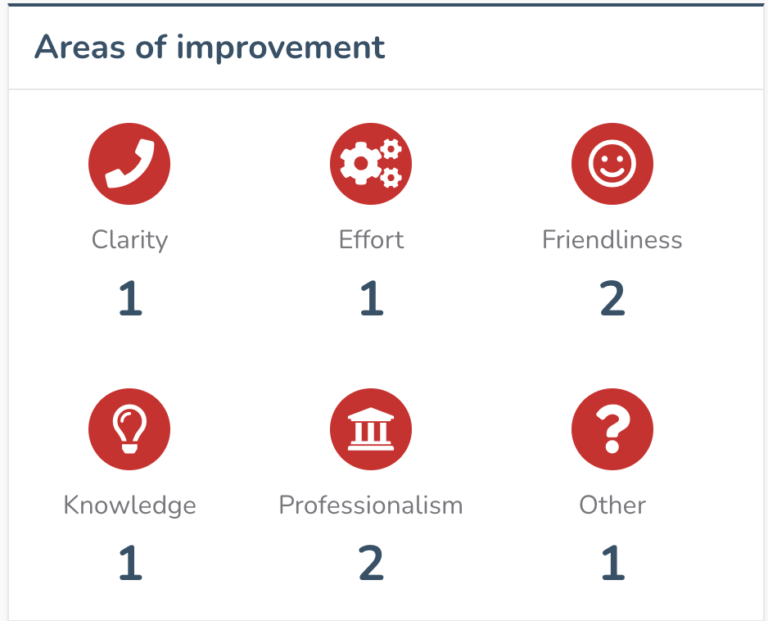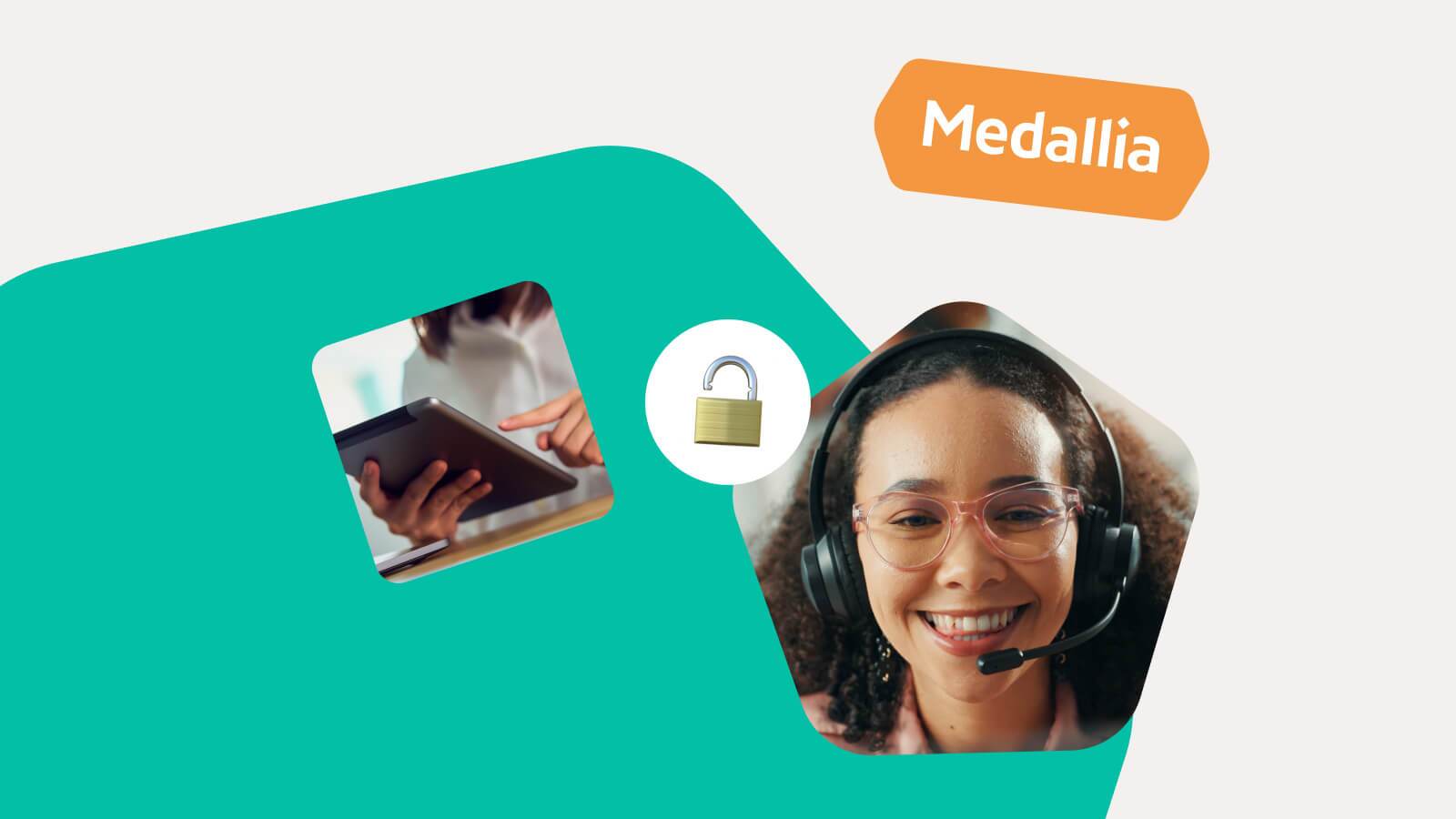29 Customer Service Training and Coaching Tips
January 4, 2022
Contact Center
Customer service coaching refers to the practice of ongoing communication between the agent and their manager to hone in on how to improve on specific skills, achieve specific goals, and develop their craft so they can handle even the most difficult customer interactions.
And if you’re in a contact center performance management role, you’ve probably invested a lot of time and energy into your customer service training and customer service coaching programs. You’re determined to build a team of brand experts who can connect with customers, resolve issues, and drive sales with ease. You also hope to keep agents engaged so they’ll want to stay put.
These are the top- and bottom-line benefits your coaching and training programs should deliver. If you’re disappointed with the results you’re seeing, it may be time to reexamine your approach.
To help you get started, we’ve compiled a list of 29 customer service coaching and training tips. These best practices will not only produce better results on the contact center floor, but they’ll help you bring far more value to your organization.
Coaching Customer Service Agents for Individual Growth
“A good coach plays a big part in determining whether an agent becomes a service nuisance and an early turnover statistic, or a long-lasting high performer.”
–Greg Levin, OFF CENTER, LLC
Coaching, defined by MIT as a “partnership between the manager and employee that creates a shared understanding about what needs to be achieved and how it is to be achieved,” is a powerful performance management tool.
At its best, coaching complements customer service training by reinforcing service ideals, continuously driving performance improvements, and boosting agents’ motivation and morale.
Here’s how to maximize the impact and value of your customer service coaching program.
1. Coach your service team strategically.
It’s important to balance your focus between agents who need it most and agents who are on the fast track to becoming top performers, as well as adjust your coaching material based on your audience. Tenured pros will roll their eyes at the basics, while more nuanced training might be lost on someone who’s still learning the ropes.
When planning your coaching sessions, always keep your audience in mind. This is for them, after all!
2. Micro-coach them throughout the day.
While having set time each week or every other week to talk about performance, a strict 1:1 schedule may not be the best fit for every single agent or team lead. That’s why we recommend taking your coaching strategy a step further and implementing micro-coaching.
Micro-coaching, or coaching in short bursts, is the most effective form of customer service coaching. In these impromptu sessions, managers pull agents aside to discuss specific, real-time performance data, making the session both personal and actionable for the agent.
Use micro-coaching to congratulate top performers, strengthen mid performers’ service delivery, and mentor agents who are struggling.
“Our employees are not amateurs. We pay them. So they are professionals. Ultimately, we want our employees to be just as great at their job as any star pro athlete. So we need to coach them daily”
–Bill Quiseng, Chief Experience Officer, BillQuiseng.com
3. Conserve your resources.
Using individual coaching sessions to get agents up to speed on every change or service issue affecting the entire team is too great a burden for managers and too costly for your operation.
In this case, it’s better to schedule group training sessions instead (see below for more on customer service training tips).
4. Make coaching sessions 1:1, always.
While group coaching sessions may be good fits for sharing company or team-wide changes or announcements, they’re impersonal by nature. In a 1:1 coaching session, managers can take the time to focus on that agent’s specific needs and concerns, without judgment or comparison from the rest of the team.
Plus, 1:1 meetings mean that agents will feel more comfortable opening up, and will ultimately come away feeling better equipped and more valued by their manager, their team, and their company.
5. Consider your agent’s point of view.
Ahead of your 1:1 session, it’s crucial that manager’s be mindful of their agent’s attitude, awareness, and needs going into the session. Is the agent a high, average, or low performer? Do agents have access to the same performance data as their managers? Be ready to answer any anticipated questions.
It’s important to ensure that you’re keeping the focus of your coaching sessions on behavior, rather than on the agent themselves. But that doesn’t mean overlooking the agent as an individual in any way.
Rather, keeping a pulse on how your agent is performing (which can inform how they’re likely going to respond to your feedback), and how they’re going to create actionable change in their behavior as a result, is another critical part of coaching.
6. Use firsthand, specific, timely data.
At Medallia Agent Connect, we believe the best and most effective coaching is coaching that is based on context. With Medallia Agent Connect 1:1s, team leads have the ability to bring real-time, agent-level metrics directly into their 1:1 conversations.
Plus, when you’re coaching an agent, you want to make sure you’re coaching on solid ground. Anyone with access to Medallia Agent Connect, including agents, can save pieces of feedback or QA reviews for discussion in 1:1s, which can then easily be added to 1:1 sessions with their team lead for coaching and recognition.
This is not only a great way for agents to proactively contribute to their growth and improvement, but also serves to keep team leads in the loop on recent successes or misses during customer interactions.
7. Have a specific purpose for each customer service coaching session.
The law of diminishing returns applies here. The more you try to pack into a coaching session, the less the agent will get out of it. If you try to focus on maintaining call quality, plus their ability to collaborate with other members of the team, on top of XYZ, it’s information overload.
Instead, limit your discussion to a single aspect of performance.
Each 1:1, highlight one focus area to discuss (bonus points if you give the agent a head’s up so they can prepare themselves for the conversation), and keep your conversation only on that topic.
8. Start off on the right foot.
Coaching isn’t about passing judgment or calling out inadequacies and failures; its purpose is to encourage agents and help them achieve their personal best. During each coaching session, make sure you start off on the right foot. You can do this in three main ways:
- Highlighting the positive. No one wants to walk into a 1:1 with their manager and immediately start discussing something they messed up or an area of their work where they’re lacking. Instead, as a manager, put your agent at ease by highlighting the work they’re doing and any cases they’ve handled particularly well since you last spoke.
- Asking open-ended questions. Don’t talk at your agent; instead, create an open dialogue about their work and give them the opportunity to explain their thought processes, provide context, and talk through potential resolutions or next steps.
- Focusing on the behavior (not the person). This one is pivotal for managers and team leads to keep in mind. When planning your 1:1s, keep in mind that your agent may have had a few difficult customer interactions lately and adjust your feedback delivery accordingly.
9. Keep it simple.
During the session, it’s fine to remind agents of higher-level business best practices to stay on top of, like your organization’s brand guidelines, but – like we mention above – the focus of the session should be behaviors that can help them improve.
You don’t want to overwhelm your agents with too much, too fast in one session. If they leave a 1:1 feeling like they have a million things to improve on, they’ll be discouraged with their work and their role. Rather, feedback should be clear and succinct so it’s easy to digest and agents should walk away from the conversation knowing exactly what steps they need to take to improve.
10. Put things in context.
Coaching with context is an invaluable approach to keeping you and your team on the same page with their performance.
With Medallia Agent Connect 1:1s, you’ll be able to get a quick view of both team and agent-level performance in relation to the metrics that matter most to your organization, like CSAT or FCR, and then drill down deeper into specific customer interactions without ever leaving the 1:1 environment.
As a result, agents are in tune with not only their own performance, but how they stack up against their peers.
11. Give the agent the floor.
We mentioned this tip earlier, but it bears repeating: don’t lecture, listen.
Coaching should be a dialogue between an agent and their manager or team lead. Your agents should be just as invested in their own growth, progress, and success as you are. Encourage agents to assess their own performance and identify any barriers to improvement (time, additional training, tools, etc.).
12. Show confidence in the agent.
You know your agents are capable of correcting performance issues and are eager to improve. But you need to show this in the way you coach.
Setting a collaborative tone will lead to better outcomes and pave the way for more productive customer service coaching sessions in the future. Show your agents that you understand how much work they do, that you see the thought and care they bring to each interaction, and that you recognize how tough it is to be on the frontline of a business.
Build them up when you have the opportunities to do so, and make it clear that you trust them to continue to perform at their best.
“Feedback should always come in two forms: motivational – this is about praising what went well and is intended to acknowledge success and build confidence; and developmental – this is about explaining what could have been done differently or better and is intended to build competence. A crucial rule of a thumb is to motivate in public and develop face-to-face.”
–Agnieszka Anna Jozwiak, CX & UX Consultant
13. Use the GROW model to develop goals and action plans.
The GROW model of coaching was developed during the 1980s by three business coaches named Graham Alexander, Alan Fine, and Sir John Whitmore. This model seeks to simplify the complexity of coaching (and being coached) by helping people clearly articulate their aspirations and plans for the future. GROW stands for:
The GROW model puts the power back in the users hands, and gives them the tools to think about a complex issue or situation in four key steps.
14. End on a positive note.
Everyone loves to feel appreciated at work, and we all know that working on the frontline of any business is not without its fair share of challenges and tough days.
Use your coaching and 1:1 time to really show your appreciation for the hard work your agents do every day to represent the brand.
Continue reading below for 15 customer service training tips….
Training Customer Service Agents for Collective Success
“[I]f you care about customer experience . . . then customer service training is not optional. It is not an extra. It is an essential component of creating a Hero-Class® customer experience that is a competitive advantage for your organization.”
–Adam Toporek, Customers That Stick
Group training isn’t just for delivering basic knowledge about products, policies, standards, tech platforms, and the other practical aspects of the customer service agent’s role. If you seize the opportunities group training affords, you’ll go a long way toward building a more cohesive, customer-centric call center culture—something that will shine through in every customer interaction.
Here’s how to start laying that new cultural foundation, brick by brick.
1. Make customer service training an ongoing effort.
For many customer-facing teams, training stops as soon as onboarding is complete, or managers let it fall by the wayside as they ramp up micro-coaching efforts. But that’s a mistake, for your team and your entire organization.
Rather, it’s important to continuously keep a pulse on team-wide performance, changes, and challenges – and guiding your team accordingly. Schedule customer service training sessions regularly and as needed to address team-wide performance issues, update agents on new policies and promotions, refresh skills, reduce agents’ feelings of isolation, and build brand pride.
2. Don’t overdo it.
If you over rely on customer service training in large group sessions, it likely means you’re not spending enough time coaching agents individually to help them progress toward their goals. While there is always a time and a place for group sessions, one should not take priority over the other.
Be sure to balance periodic one-to-many training sessions with daily 1:1 agent coaching sessions from managers.
3. Determine your training priorities.
Just as each 1:1 session needs a focus, so too do large group training sessions.
As a leader, it’s a crucial part of your role to be keeping tabs on team performance across both hard and soft skills, core organizational KPIs, and other metrics for success in order to decide where to best focus your time and efforts.
Salesforce’s recommended training priorities for customer service staff include: product knowledge, effective communication, patience, efficiency (proficiency with tech stack, anticipating likely customer questions, etc.), and attention to detail for more effective troubleshooting and likelier first contact resolution (aka first call resolution).
4. Align customer service training with brand values and goals.
It’s not enough for your frontline organization to be aligned to your company’s values. Each individual agent on your team needs to be bought in on your company’s mission and vision, as well as your brand identity.
If you let things that are “off brand” slide, and cause brand guidelines to seem arbitrary, it will be harder to get your agents’ buy-in and harder to continuously deliver on-brand experiences for your customers.
When sharing brand guidelines and identity with your team, make sure to include the “why,” or the brand goals and values reflected in the desired behavior, so agents will feel empowered in their role and enthusiastic about representing the brand well.
Google, Zynga, and other tech leaders use Objective & Key Results (OKRs), a concept first developed at Intel, to build a culture of world-class customer service. OKRs help agents see the big picture and where they fit in. OKRs can also help improve product testing, customer training webinars, corporate content, employee coaching and training programs, help center resources, and customer experience design.
5. Clarify expectations at all levels.
Not having a clear picture of what goals, metrics for success, or objectives your agents should be tracking towards can lead to frustration, confusion, and disconnect within your customer service organization.
To start, clearly outline high-level expectations and work your way down from the overall brand, to your department, and then supervisor expectations. This helps agents think more critically about their role so they can identify opportunities to streamline operations and improve service quality.
6. Right away, recognize top performing service agents.
It’s no longer a question of whether or not you should have a rewards and recognition program – rather, it’s a question of how to execute a program that makes your agents feel valued by your business.
Recognizing agents who’ve represented the brand well has important benefits: it keeps top performers engaged, instills important lessons, and inspires other agents to achieve the same level of excellence.
When sharing kudos for a job well done – either in the form of public praise on Slack, in a company meeting, or even in a 1:1, be sure to share details of the call/chat/email you’re calling out as well-done and explain why those behaviors are important to the brand.
7. Address trending or anticipated customer inquiries.
There’s nothing worse for a customer service agent than getting a call or chat from a customer with a question about a promotion or an issue they’ve never heard of before. It makes them look unprofessional, unprepared, and paints your brand in a bad light to your customers.
To circumvent this, make sure you’re utilizing team training sessions to alert the team to any widespread challenges and/or inquiries customers are having or may soon have, perhaps due to website changes, a new promotion, new product lines, etc.
This will leave agents better prepared to resolve issues on first contact.

With Medallia Agent Connect, you can identify specific areas, such as returns in this instance, where a service agent may need extra training.
8. Incorporate customer feedback into training.
While 1:1 sessions are great for digging in on areas of improvement with individual agents, you may find yourself repeating the same thing over and over again if multiple agents are struggling with the same issues.
If more than a few agents are struggling in a particular area of service (product knowledge, for example), schedule a group customer service training session to address the topic. This will help the team focus on specific problems that are impacting customer satisfaction.

With Medallia Agent Connect, customers can identify areas of improvement for agents they interact with after an interaction that may have missed the mark. Team leaders can monitor trends at the agent and team-level, which can then be used to fuel customer service training topics.
9. Focus on agent empowerment, not limits.
Confident, enthusiastic agents are trained to take ownership of the service experience.
But that ownership may not be something that comes naturally to every agent, especially if it wasn’t encouraged in their previous roles.
While there are some company policies that everyone on the team should abide by, focus instead on educating your team in a way that fosters their ability to really own each customer interaction they have. Instead of strict scripts and rules, give them the knowledge, authority, resources, and tools they need to take charge of the situation, find answers, resolve issues on their own, and make customers happy.
“Exceptional Customer Service starts with hiring, training and empowering the right people. This takes an investment, but the rewards are worth it!”
–John Boccuzzi, Jr.
10. Develop soft skills through “experience engineering.”
Experience engineering, according to The Effortless Experience author Matt Dixon, is the process of “actively guid[ing] a customer through an interaction that is designed to anticipate the emotional response and preemptively offer solutions that create a mutually beneficial solution.” It consists of three principles:
- Advocacy (alignment with the customer, as reflected in Apple’s “Feel, Felt, Found” training scenarios);
- Positive language; and
- Anchoring (nudging customers toward a particular product/solution by casting it in the best light).
To help agents engineer authentic experiences that drive profits, and to help them negotiate complex or tricky customer encounters, combine role play and other experiential learning methods with recordings and transcripts of ideal service interactions.
11. Make customer service training engaging and fun.
If training is not engaging, it’s not effective. No one wants to sit in a conference room or on a Zoom call for over an hour listening to someone read off a PowerPoint presentation.
Instead, keep your agents actively engaged in their training by providing a mix of learning aids and experiences, mixing up the formats, and including peer-led training sessions lead by seasoned CX pros (a team favorite).
In addition, make sure you’re regularly updating the program so it never gets stale and your content is not only accurate, but timely.
According to a 2016 Aberdeen study, contact centers using gamification (trivia games, peer challenges, etc.) saw bigger improvements than other contact centers in four important categories: agent retention rates, customer satisfaction, average cost per customer contact, and customer lifetime value.
12. Emphasize hands-on learning.
Renowned training and leadership expert John Whitmore once observed that by simply telling employees information, their recall after three months is about 10%. But if you tell, show, and let employees experience what you’re trying to teach, three-month recall jumps to 65%.
Inside and outside of training, give contact center agents a real feel for the job – both the day-to-day happenings of what they’ll be handling as well as the products you offer. If you’re a retail business, many leading brands have showrooms in their contact centers, where agents can see, touch, feel, and try on merchandise at any time. For a software company, give your agents a demo environment where they can play around and really familiarize themselves with your tools.
This builds enthusiasm for the brand’s products and empowers agents to answer customers’ questions more effectively.
13. Include self-directed learning.
While it’s important to have instructor-led training to ensure someone covers all the necessary material and can answer any questions in real-time, it’s equally as important to hold your team accountable for their own continued education and growth.
For lessons that may not need as much hands-on training, give new agents an initial to-do list of printed and/or digital resources to complete, and provide access to a library of recordings and transcripts of various types of customer inquiries (policy questions, product comparisons, problems with self-help tools, etc.).
What agents do on their own to advance their knowledge is equally important to their success.
14. Measure program outcomes.
It’s not enough to implement a customer service training program and call it a day.
In order to set your agents, team, and organization up for success, you also need to determine how you’ll evaluate the effectiveness of your training.
You could gauge employee satisfaction with the program, test their knowledge, measure behavioral changes, and/or track organizational performance and ROI. We recommend using all these indicators, along with real-time customer feedback, NPS, and other measures of customer satisfaction.
15. Give agents a lifeline between sessions.
Communication platforms such as Slack allow agents free and easy access to their supervisors and more experienced peers so they can get quick answers and helpful tips between customer service coaching and training sessions.
Without the ability to get quick answers, or easily ask for input on a situation they’re handling in real-time, agents may miss the mark, which could result in poor customer experiences.
A lifeline like this is important in a physical contact center, and even more so for the remote teams of today.
Learn How Leading Brands Are Driving Results Through Customer Service Coaching & Training Programs.
Leading brands such as RevZilla, Jet, Candid, and Brooklinen have discovered the simple, powerful fuel that keeps coaching and training programs running smoothly, motivates agents to self-correct, maximizes operational efficiency, and accelerates growth.
Ready to ignite agent performance? Check out Medallia’s guide, 4 Steps to Supercharge Contact Center Agent Performance, to learn how leading contact centers are putting the right systems and processes in place to achieve success.














